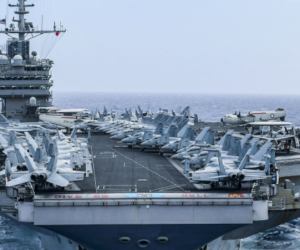
Sorry, your browser is not compatible with this application. Please use the latest version of Google Chrome, Mozilla Firefox, Microsoft Edge or Safari.
U.S. Military Forces in FY 2020: Navy
The Navy in FY 2020 generally reflects the priorities of the department as a whole. It sustains the level of readiness built in the FY 2017–FY 2019 budgets and mostly modernizes by increasing production of existing ship, aircraft, and munition programs.
However, a major change is the acquisition of unmanned surface and subsurface vessels. Although these early acquisitions are essentially experimental, they could revolutionize naval combat in the long term by shifting the fleet balance to smaller, more numerous, and more dispersed systems. Thus, the Navy surface and subsurface fleet may be on the cusp of revolutionary change. Naval aviation, in contrast, remains focused on manned platforms.
The Navy feels the capacity/capability tension most acutely because of the high demands for its forces in day-to day operations and the long lead times and high capital costs for its weapon systems. Therefore, it actually implements its force structure expansion plans, unlike the Army and Air Force, which have expansion plans but have had to defer implementation.

| Format: |
|
| Topics: | |
| Website: | Visit Publisher Website |
| Publisher: | Center for Strategic and International Studies |
| Published: | October 1, 2019 |
| License: | Copyrighted |
| Copyright: | © 2019 by the Center for Strategic and International Studies. All rights reserved. |
Featured Content

Contact Publisher


Claim Content





